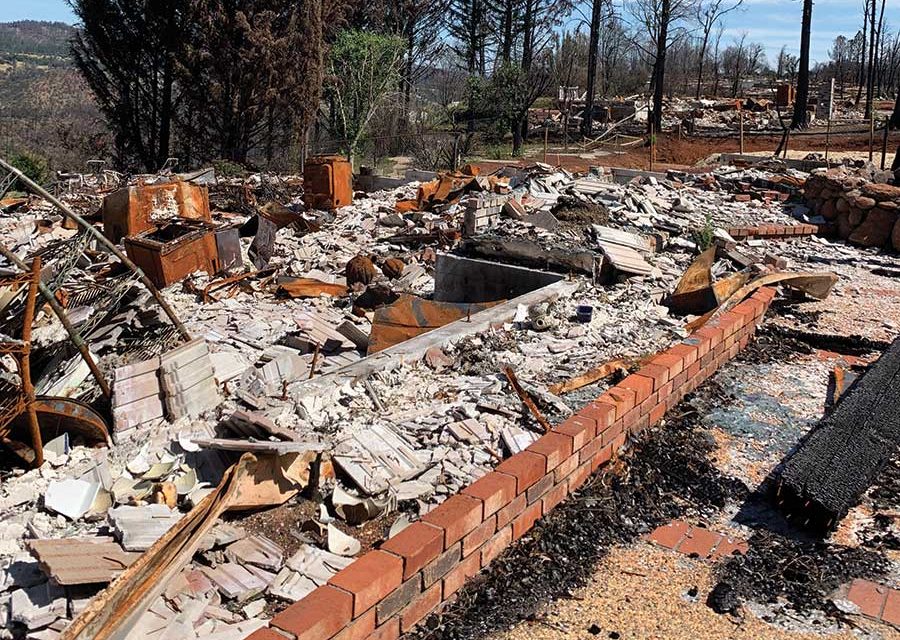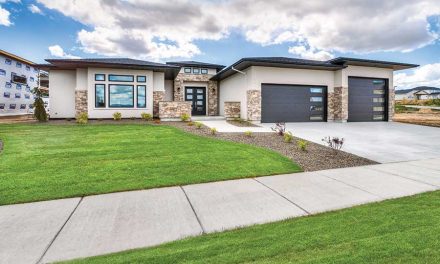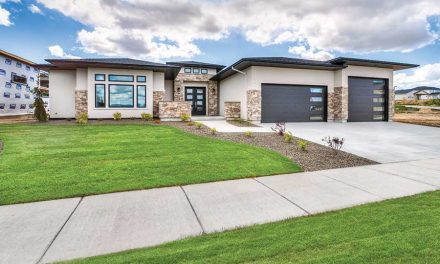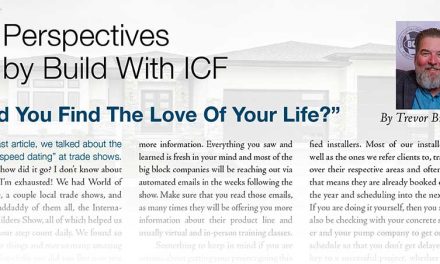A photo of a traditional stick-frame home destroyed
by wildfire.
–By Trevor Brown
Tornados, hurricanes, floods, blizzards, and fires happen. Whether you like it or not, you can’t stop bad things from happening. You try to reduce the amount of bad things by paying attention at the wheel, looking both ways before you cross the street, and double checking equipment on a job site. We all try our absolute best to reduce the chance that something bad may happen to us everyday. Yet 90% of the country still lives in stick-frame houses. I don’t get it.
The National Centers for Environmental Information says the U.S. has sustained 357 weather and climate disasters since 1980, where overall damages/costs reached or exceeded $1 billion (including CPI adjustment to 2023). The total cost of these 357 events exceeds $2.540 trillion. There have already been nine confirmed by June of this year. We can’t stop it, but we can plan for it. By building your home out of ICF, you increase the strength of your home by 5 to 10 times. Depending on the thickness of walls, your home will be able to withstand up to 300 mph winds and up to 200 mph projectiles. Not to mention they have up to 4-hour fire ratings. Now this doesn’t mean you should hunker down and try to ride out a disaster if you have the chance to get out of there, but you will know all your prized possessions will be there waiting for you when you get back. If you get caught by a tornado and you need a safe space to hide out until it passes over, you will be happy that you made the smart decision to build with ICF.
I live in the West and I have been lucky enough to never experience a hurricane or a tornado, but I have seen more than my share of fires. The devastation is heartbreaking, and I imagine it’s the same feeling walking through a tornado or hurricane area. I have spent a good amount of time in California after fires talking to the people who lost their homes. The first one I witnessed was the Tubbs Fire in Napa Valley. 5,643 structures were lost and sadly, 22 lives. But by far the most devastation I experienced was the Camp Fire in Paradise in 2018. I had a sales trip already scheduled the week after the fires. I was a territory manager for an ICF company and was making sales calls in the area. My Northern California distributor was directly affected in so many ways and my week soon changed to helping him deal with this disaster rather than cruising around seeing customers and job sites. Though he lived just outside the devastation, some of his family lost their homes. They were staying at his house waiting to be allowed back in to get what was left of their belongings. Unfortunately, we later found out there weren’t any. They lost everything. This particular ICF distributor is an amazing guy. Every time I came to town, we would have dinner at his house rather than going out as I usually would with my customers. That trip, I sat at dinner with him and his displaced family, hearing the story of how the morning went from sitting on their patio drinking coffee to hearing about a fire that was burning at the bottom of the ridge, to running for their lives just hours later. Within a few hours, 18,804 structures were lost and 85 people lost their lives.
My distributor had built and supplied several houses in the fire area. ALL OF THEM SURVIVED. The most damage sustained was incinerated A/C units and one of them lost a window out of the garage door. This, though great for those people, was the source of great frustration and even guilt for my distributor and myself to this day. Why can’t more people just build with insulated concrete forms? I made half a dozen more trips to Paradise over the next couple years and participated in several Rebuild Paradise Home Shows and Conferences. I got to speak with hundreds of affected people about rebuilding with ICF. I also got to visit a couple of the ICF survivor houses and even sat in them and spoke to the owners. It was such a mix of relief when they came back to find all of their belongings and home waiting for them along with the guilt of seeing their friends’ and neighbors’ complete and total loss.
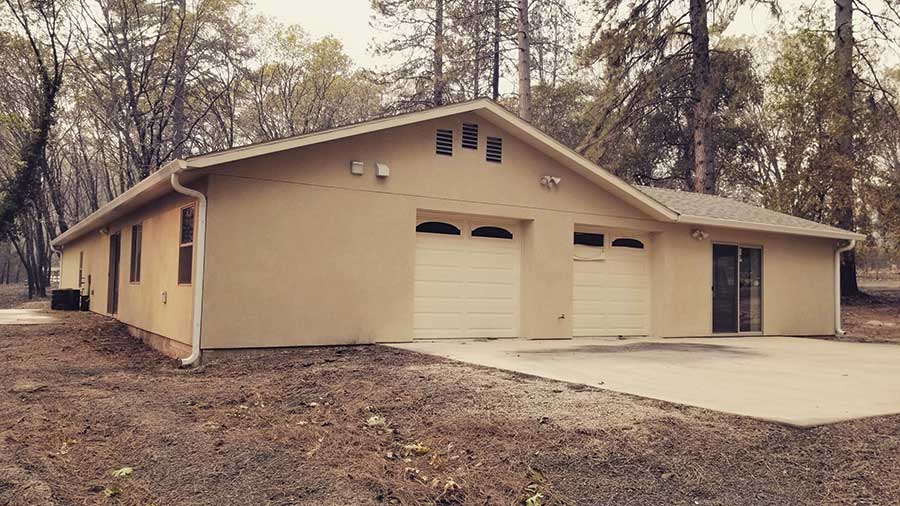
A photo of an ICF home that survived the Camp Fire.
Disasters are different in different parts of the country. One of the amazing things about ICF is that its benefits adapt to the geographic area it’s used in. Just last week I was following a friend of mine on Facebook and he was out of power for a week! No air conditioning in the dead of summer. An ICF house will hold the heat out and the cool in for 10 times longer than a stick-frame house. It made me think about elderly people in Arizona, Texas, or California, where you have high temps and the possibility of rolling blackouts. That could be a disaster! This year we had huge snow and rain levels across the country. I saw several videos this spring of houses being toppled and swept away by flood waters. Having a house that is 10x stronger than a stick-frame house will increase the chance you will have a home to come home to after the waters subside. Everyone should ask yourself, why would I not want to be better prepared for a disaster? Just build with ICF.
On the opposite end of the spectrum from fire, we have blizzards. Blizzards pack fierce winds, bitter cold, and often heavy snow, the blizzard has earned a reputation as the most severe type of winter storm. A number have been powerful and deadly enough to become among the most memorable United States weather disasters. The National Weather Service defines a blizzard as an event in which strong winds, exceeding 35 miles per hour, coincide with blowing or falling snow to reduce visibility below a quarter mile. This usually involves extremely low temperatures and ice. A lot of times the ice causes problems by weighing down power lines and tree branches, causing loss of power just like a rolling blackout can do in heat. Imagine being snowed in without any way to heat your home. R-value and efficiency of your home becomes crucial.
As you can see disasters come in different forms and insulated concrete form construction is a great answer to all of them. The more involved I get in the ICF industry, I find more and more people wanting to build with ICF for more and more reasons. Everyone has a different idea of what a “disaster” is. I have spoken to people who are concerned with energy because of the rising heating and cooling costs. I talk to people concerned with sound quality because they live near a busy street or train tracks. I have sold ICF to people who were passionate about reducing the amount of trees being cut down to build their home. I have sold ICF to several people who went with it because of being bulletproof. (They have been ballistic tested up to 50 caliber in case you were curious). Believe it or not, I even sold to someone who was very concerned that a vehicle may careen off of the busy road he lived on and could hit his home, so he wanted his house to be “car proof.” Which, when you find out that cars hit buildings 60 times per day, according to research from advocacy group the Storefront Safety Council, is not so far-fetched. I’ve learned it’s hard to determine what is going to motivate someone to make a change and to really do the research to find something that makes them feel comfortable in a major decision. What makes you feel safe may not be what makes someone else feel safe.
I feel as if all of us are the most motivated when something affects us directly or hits very close to home. Though every person has different experiences, those fires changed me and only added to my passion for building with ICF. These people did nothing wrong. They bought homes or built homes that they thought would keep them and their families safe. It is up to us to educate builders, architects, engineers, code officials, politicians, and home owners of the resilience of insulated concrete forms. Disasters happen. This IS what we can do about it.
Trevor Brown
Trevor Brown is the owner and operator of Innovative Building Products, a multiline ICF and ICF accessories distribution company. He has been in the ICF industry for over 20 years starting as an installer and distributor. He has managed the Western U.S. for an industry-leading ICF company and is now an independent consultant for ICF builders and homeowners across the country. He is also the co-host of the Build With ICF Podcast, which can be found from the website,
www.buildwithicf.com.

